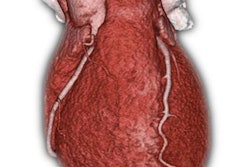Sunday, November 27 | 10:45 a.m.-10:55 a.m. | SSA20-01 | Room S403B
Managing CT protocols, especially at a large institution, can be an unwieldy task. But researchers from the Mayo Clinic in Rochester, MN, tamed the beast with a web-based protocol management system.CT protocol review is labor-intensive, error-prone, and costly, said Cynthia McCollough, PhD, professor of medical physics and bioengineering at Mayo.
"Each protocol has dozens of parameters that need to be set correctly on the CT scanner," she wrote in an email to AuntMinnie.com. "Inadvertent or unauthorized changes to these parameters can yield decreased diagnostic quality or increased dose relative to the practice's approved protocols."
Her group developed, implemented, and piloted a protocol quality management system that allows technologists, radiologists, or physicists to compare master protocols approved by the practice with the protocol parameters programmed into the scanner.
Software for the web-based system consisted of four main modules, including one to import scanner protocols and automatically identify inconsistencies between master and scanner protocols. A second module created reviews of specific protocols and tracked reviewers' decisions. A third module summarized needed changes to scanner protocols, and a fourth module enabled viewing and editing of master protocols.
The group ran a pilot study of abdominal protocols on three CT scanners of the same model. Master protocols were built from the import of those protocols, and they were reviewed by lead technologists and medical physicists. The reviewers corrected protocol inconsistencies that were automatically identified by the system.
"By automating this function, a practice can keep a close eye on all its protocols across a practice, large or small, thereby ensuring that protocol errors do not go uncorrected," McCollough said.




















